Foo Fighters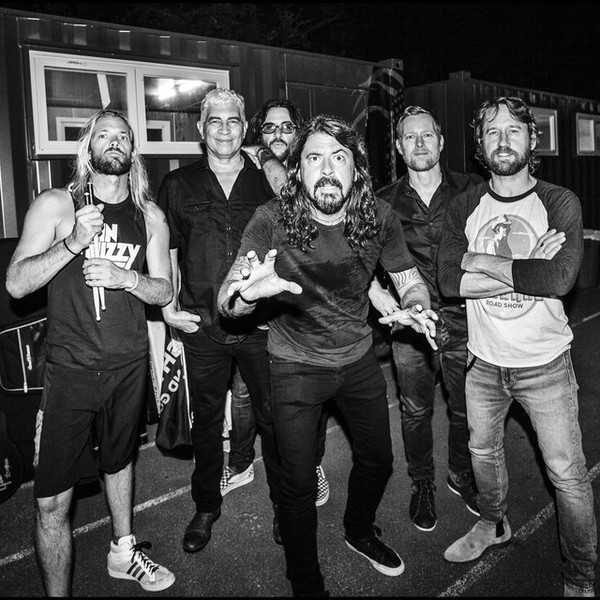 | ||
| Allmusic Biography : When Foo Fighters released a debut album written and recorded entirely by leader Dave Grohl -- at that point known only as the powerhouse drummer for Nirvana -- in the summer of 1995, few would have guessed that the group would wind up as the one band to survive the 90s alt-rock explosion unscathed. Other bands burned brighter but flamed out, breaking up after scoring a hit or two, while the Foos steadily racked up success after success, filling stadiums around the world while staying on top of the charts all the way into the second decade of the new millennium. Once the bands lineup coalesced around the time of its third album in 1999, Foo Fighters sound also gelled into a recognizable signature built upon the heavy, melodic, loud-quiet-loud template of the Pixies and Nirvana, the modern rock anchored by a love of classic guitar rock. It was commercial without pandering, creatively restless without being alienating, a sound with wide appeal delivered by a band that was happy to tour and record the way bands did back in the 70s. When Wasting Light became their first number one album in America upon its release in the spring of 2011, it was confirmation that Foo Fighters were survivors who had earned a large, devoted audience primarily through hard work. All of this industriousness stems from Dave Grohl, who had been playing guitar and writing songs long before he began drumming. Throughout his early teens he performed in a variety of hardcore punk bands and in the late 80s he joined the Washington, D.C.-area hardcore band Scream as their drummer. During Screams final days, Grohl began recording his own material in the basement studio of his friend Barrett Jones. Some of Grohls songs appeared on Screams final album, Fumble. Following the bands 1990 summer tour, Grohl joined Nirvana and moved cross-country to Seattle. After Nirvana recorded Nevermind, Grohl went back to the D.C. area and recorded a handful of tracks that would appear on Pocketwatch, a cassette released by Simple Machines. For most of 1992, he was busy with Nirvana, but when the band was off the road, he recorded solo material with Jones, who had also moved to Seattle. The pair kept recording throughout early 1993, when Grohl returned to Nirvana to record In Utero. Grohl had toyed with the idea of releasing another independent cassette in the summer of 1993, but the plans never reached fruition. Following Kurt Cobains suicide in 1994, the drummer kept quiet for several months. In the fall of 1994, Grohl and Jones decamped to a professional studio and recorded the songs that comprised Foo Fighters debut album in a week. Boiling down his backlog of songs to about 15 tracks, Grohl played all of the instruments on the album. He made 100 copies of the tape, passing it out to friends and associates. In no time, Grohls solo project became the object of a fierce record company bidding war. Instead of embarking on a full-fledged solo career, Grohl decided to form a band. Through his wife he met Nate Mendel, the bassist for Sunny Day Real Estate. Shortly before the pair met, Jeremy Enigk, the leader of Sunny Day Real Estate, had converted to Christianity and quit the band, effectively ending the groups career. Not only did Mendel join Grohls band, but so did Sunny Days drummer, William Goldsmith. Former Germs and Nirvana guitarist Pat Smear rounded out the lineup. The band, named Foo Fighters after a World War II secret force that allegedly researched UFOs, signed a contract with Capitol Records. The bands self-titled debut, consisting solely of Dave Grohls solo recordings, was released on July 4, 1995. It became an instant success in America, as "This Is a Call" garnered heavy alternative and album rock airplay. By early 1996, the album was certified platinum in the U.S. Throughout 1996, Foo Fighters supported the album with an extensive tour, enjoying a crossover hit with "Big Me" that spring. Late in the year, the group began recording its second album with producer Gil Norton. During the sessions, William Goldsmith left the band due to creative tensions, leaving Grohl to drum on the majority of the album. Before the records release, Goldsmith was replaced by Taylor Hawkins, who had previously drummed with Alanis Morissette. The Colour and the Shape, Foo Fighters second album and the first they recorded as a band, was issued in May of 1997. Smear left the group in the wake of the albums completion and was replaced by guitarist Franz Stahl, whose stay proved short-lived; 1999s There Is Nothing Left to Lose was recorded as a three-piece, with ex-No Use for a Name guitarist Chris Shiflett signing on soon after. One by One, the groups most polished production, appeared in late 2002, followed by 2005s In Your Honor, which narrowly missed the top of Billboards album chart. After releasing a live album titled Skin and Bones in 2006, the band returned to Nortons studio and started constructing a dozen fractured, eclectic rock songs to be released in 2007 under the name Echoes, Silence, Patience, and Grace. Two years later, the group released its first compilation, Greatest Hits, as Grohl launched his new supergroup Them Crooked Vultures, which also featured Josh Homme of Queens of the Stone Age and Led Zeppelins John Paul Jones. Foo Fighters reconvened for 2011s Wasting Light, a Butch Vig production that doubled as the official return of Pat Smear, who hadnt played on any of the bands albums since 1997. Wasting Light wound up as a smash success for the Foos, debuting at number one on the Billboard charts, going gold in the U.S. and garnering the band another four Grammy Awards. In the wake of Wasting Light, several other Foo projects emerged -- a limited-edition compilation of covers called Medium Rare released for Record Store Day 2011; a documentary of the band called Back and Forth -- and the group toured the album into 2012. In 2012, Foo Fighters announced they were taking a hiatus and Dave Grohl immediately returned to the confines of Queens of the Stone Age, drumming on their 2013 album, ...Like Clockwork. He also threw himself into directing a documentary about the legendary Los Angeles recording studio Sound City. The film appeared early in 2013 to positive reviews, and it was accompanied by a soundtrack called Sound City: Reel to Real, which featured Grohl-directed jams including a variety of Sound City veterans, plus Paul McCartney. Not long after its release, Foo Fighters announced that their hiatus had ended and they were working on a new album. Sonic Highways, released late in 2014, was their most ambitious project yet; each track was recorded in a different city, some with special featured guests, a process documented on an eight-episode documentary series for HBO. Sonic Highways saw international release in early November 2014. During the Sonic Highways world tour, the Foos had the honor of being the final band to perform on The Late Show with David Letterman on May 24, 2015. Soon after, as touring resumed, Grohl fell from the stage during a stop in Sweden, breaking his leg. He performed from a throne for the remainder of the tour, which was rechristened the "Broken Leg Tour." In late 2015, both as a gesture of appreciation to fans and a tribute to the victims of the Paris terror attacks, Foo Fighters released the Saint Cecilia EP, a five-song blast that featured Gary Clark, Jr. and Ben Kweller. It returned the band to the Billboard charts, peaking in the Top 20 on the Hard Rock, Alternative, Tastemaker, and Vinyl charts. Soon after, the band announced an indefinite hiatus and would not release new music until two years later, when they returned with the single "Run." This was the first taste of their ninth album Concrete and Gold, which appeared in September 2017. | ||
 | Album: 1 of 12 Title: Foo Fighters Released: 1995-06-26 Tracks: 12 Duration: 44:06 Scroll: Up Down Top Bottom 25% 50% 75% Spotify TrackSamples Wikipedia Allmusic AlbumCover | 1 This Is a Call (03:53) 2 I’ll Stick Around (03:53) 3 Big Me (02:12) 4 Alone + Easy Target (04:05) 5 Good Grief (04:01) 6 Floaty (04:30) 7 Weenie Beenie (02:45) 8 Oh, George (03:00) 9 For All the Cows (03:30) 10 X‐Static (04:13) 11 Wattershed (02:15) 12 Exhausted (05:45) |
| Foo Fighters : Allmusic album Review : Essentially a collection of solo home recordings by Dave Grohl, Foo Fighters eponymous debut is a modest triumph. Driven by big pop melodies and distorted guitars, Foo Fighters do strongly recall Nirvana, only with a decidedly lighter approach. If Kurt Cobains writing occasionally recalled John Lennon, Dave Grohls songs are reminiscent of Paul McCartney -- theyre driven by large, instantly memorable melodies, whether its the joyous outburst of "This Is a Call" or the gentle pop of "Big Me." That doesnt mean Grohl shies away from noise; toward the end of the record, he piles on several thrashers that make more sense as pure aggressive sound than as songs. Since he recorded the album by himself, they arent as powerful as most bands primal sonic workouts, but the results are damn impressive for a solo musician. Nevertheless, they arent as strong as his fully formed pop songs, and thats where the true heart of the album lies. Foo Fighters has a handful of punk-pop gems that show, given the right musicians and songwriters, the genre had not entirely become a cliché by the middle of the 90s. | ||
![Allmusic album Review : Taking a cue from the old Blondie marketing slogan, the sophomore effort from Dave Grohl’s post-Nirvana band was their “The Foo Fighters is a band” project -- well, at least it was intended that way, but Grohl pushed aside drummer William Goldsmith during the recording and played on the entire record. And who could blame him? When you’re the greatest drummer in rock, it’s hard to sit aside for someone else, no matter how good your intentions, and Grohl’s drumming does give the Foos muscle underneath their glossy exterior. That slickness arrives via producer Gil Norton, hired based on his work with the Pixies, but he manages to give The Colour and the Shape almost too sleek a sheen, something that comes as a shock after the raggedness of the group’s debut. Even the glossy final mix of Nevermind has nothing on the unapologetic arena rock of The Colour and the Shape -- it’s all polished thunder, rock & roll that’s about precision not abandon. Some may miss that raw aggression of Grohl’s earlier work, but he’s such a strong craftsman and musician that such exactness also suits him, highlighting his sense of melody and melodrama, elements abundantly in display on the album’s two biggest hits, the brooding midtempo rockers “My Hero” and “Everlong.” Elsewhere, the Foos grind out three-chord rockers with an aplomb that almost disguises just how slick Norton’s production is, but everything here, from the powerful rush of the band to the big hooks and sleek surface, wound up defining the sound of post-grunge modern rock, and it remains as perhaps the best example of its kind. [Legacy’s tenth anniversary edition of The Colour and the Shape was expanded by six bonus tracks, adding a clutch of non-LP B-sides, the highlight of which is a version of Gerry Rafferty’s “Baker Street.”] the_colour_and_the_shape](../../images/foo_fighters-the_colour_and_the_shape.jpg) | Album: 2 of 12 Title: The Colour and the Shape Released: 1997-05-10 Tracks: 13 Duration: 46:52 Scroll: Up Down Top Bottom 25% 50% 75% Spotify Wikipedia Allmusic AlbumCover | 1 Doll (01:23) 2 Monkey Wrench (03:51) 3 Hey, Johnny Park! (04:08) 4 My Poor Brain (03:33) 5 Wind Up (02:32) 6 Up in Arms (02:15) 7 My Hero (04:20) 8 See You (02:26) 9 Enough Space (02:37) 10 February Stars (04:49) 11 Everlong (04:10) 12 Walking After You (05:03) 13 New Way Home (05:40) |
| The Colour and the Shape : Allmusic album Review : Taking a cue from the old Blondie marketing slogan, the sophomore effort from Dave Grohl’s post-Nirvana band was their “The Foo Fighters is a band” project -- well, at least it was intended that way, but Grohl pushed aside drummer William Goldsmith during the recording and played on the entire record. And who could blame him? When you’re the greatest drummer in rock, it’s hard to sit aside for someone else, no matter how good your intentions, and Grohl’s drumming does give the Foos muscle underneath their glossy exterior. That slickness arrives via producer Gil Norton, hired based on his work with the Pixies, but he manages to give The Colour and the Shape almost too sleek a sheen, something that comes as a shock after the raggedness of the group’s debut. Even the glossy final mix of Nevermind has nothing on the unapologetic arena rock of The Colour and the Shape -- it’s all polished thunder, rock & roll that’s about precision not abandon. Some may miss that raw aggression of Grohl’s earlier work, but he’s such a strong craftsman and musician that such exactness also suits him, highlighting his sense of melody and melodrama, elements abundantly in display on the album’s two biggest hits, the brooding midtempo rockers “My Hero” and “Everlong.” Elsewhere, the Foos grind out three-chord rockers with an aplomb that almost disguises just how slick Norton’s production is, but everything here, from the powerful rush of the band to the big hooks and sleek surface, wound up defining the sound of post-grunge modern rock, and it remains as perhaps the best example of its kind. [Legacy’s tenth anniversary edition of The Colour and the Shape was expanded by six bonus tracks, adding a clutch of non-LP B-sides, the highlight of which is a version of Gerry Rafferty’s “Baker Street.”] | ||
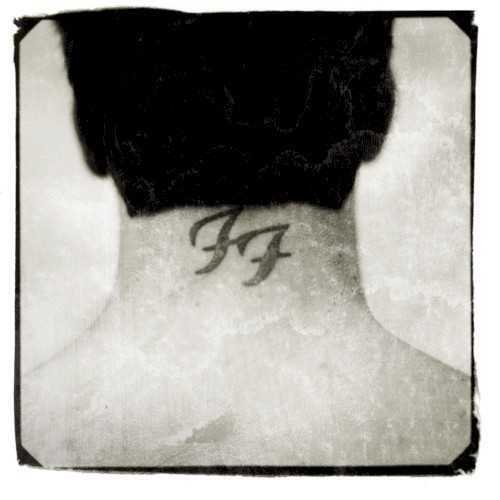 | Album: 3 of 12 Title: There Is Nothing Left to Lose Released: 1999-11-01 Tracks: 11 Duration: 46:22 Scroll: Up Down Top Bottom 25% 50% 75% Spotify Wikipedia Allmusic AlbumCover | 1 Stacked Actors (04:16) 2 Breakout (03:20) 3 Learn to Fly (03:55) 4 Gimme Stitches (03:42) 5 Generator (03:49) 6 Aurora (05:51) 1 Live‐In Skin (03:52) 2 Next Year (04:38) 3 Headwires (04:37) 4 Ain’t It the Life (04:14) 5 M.I.A. (04:03) |
| There Is Nothing Left to Lose : Allmusic album Review : Foo Fighters were the most unexpectedly mercurial band in 90s rock, boasting a different lineup for each of their three albums. The ever-shifting membership didnt help erase the image that the group was merely a vehicle for Dave Grohl, and made it seem like Grohl was something of a dictator, at least to some biased outside observers. Thats why their third record, There Is Nothing Left to Lose, comes as somewhat of a surprise. It is the first Foo Fighters album that sounds like the work of a unified, muscular band, and the first one that rocks really hard. A lot of credit should go to Adam Kasper, who produced the record with the band. There Is Nothing Left to Lose has a stripped-down sound and an immediate attack that makes even the poppier numbers rock hard. The organic, natural sound is welcome, but the album also benefits from the strongest set of songs Grohl and Foo Fighters have yet written. There are the typical strong singles, but theres no fat or filler; each track has a memorable hook or melody, and they seem all the more catchy because theyre delivered with conviction and confidence. And thats why the album sounds like the first true band album Foo Fighters have made -- the group sounds assured and confident, where they previously seemed like they had something to prove. Its as if they know they have few peers in straight-ahead post-grunge hard rock, so theyre willing just to lie back and turn out a solid set of 11 songs. They make it sound easy and fun, and thats what really sets them apart from their contemporaries. That and the fact that theyre getting better as theyre losing members and growing older, which is certainly a rarity in rock & roll. | ||
 | Album: 4 of 12 Title: One by One Released: 2002-10-21 Tracks: 17 Duration: 1:18:24 Scroll: Up Down Top Bottom 25% 50% 75% Spotify Wikipedia Allmusic AlbumCover | 1 All My Life (04:23) 2 Low (04:28) 3 Have It All (04:57) 4 Times Like These (04:26) 5 Disenchanted Lullaby (04:33) 6 Tired of You (05:11) 7 Halo (05:06) 8 Lonely as You (04:37) 9 Overdrive (04:30) 10 Burn Away (04:58) 11 Come Back (07:49) 12 Walking a Line (03:56) 13 Sister Europe (05:10) 14 Danny Says (02:58) 15 Life of Illusion (03:40) 16 For All the Cows (03:32) 17 Monkey Wrench (04:02) |
| One by One : Allmusic album Review : One by One is the most accomplished album Foo Fighters have made, which isnt necessarily the same as the best. Picking up the clean, focused sound and attitude of There Is Nothing Left to Lose, One by One is gleaming hard rock: it may have a shiny production, but hits hard in its rhythm and its impeccably distorted guitars. Dave Grohls songs often express (or at least suggest) tortured emotions in their lyrics, but the album doesnt hit at a gut-level; its too polished for that. Its not a bad thing, since the band is damn good and the production is more focused than any of the Foos previous albums. The problem is, Grohls songwriting has slipped slightly. Its still sturdy and melodic, yet not as immediate or memorable. Nothing is as majestic as "Learn To Fly," haunting as "Everlong," gut-crunching as "Monkey Wrench," or even as boneheadedly irresistible as their contribution to the Orange County soundtrack, "The One". Instead, it all fits together and sounds good as a piece, without offering individual moments to savor. Not the worst tradeoff, of course, but its hard not to wish that the songs stuck in your head the way they used to, even if the album is still enjoyable as a whole. | ||
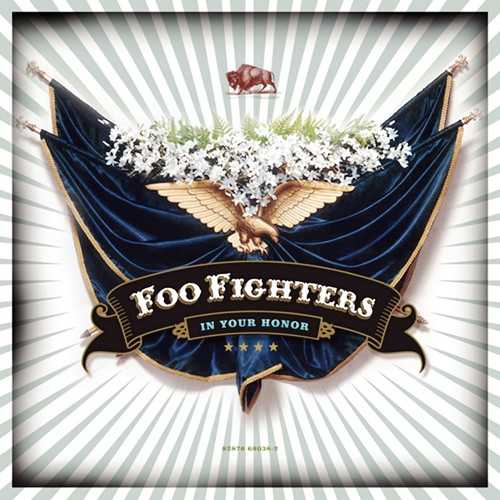 | Album: 5 of 12 Title: In Your Honor Released: 2005-05-13 Tracks: 20 Duration: 1:23:27 Scroll: Up Down Top Bottom 25% 50% 75% Spotify Wikipedia Allmusic AlbumCover | 1 In Your Honor (03:50) 2 No Way Back (03:16) 3 Best of You (04:15) 4 DOA (04:12) 5 Hell (01:57) 6 The Last Song (03:19) 7 Free Me (04:38) 8 Resolve (04:48) 9 The Deepest Blues Are Black (03:58) 10 End Over End (05:54) 1 Still (05:13) 2 What If I Do? (05:02) 3 Miracle (03:29) 4 Another Round (04:25) 5 Friend of a Friend (03:13) 6 Over and Out (05:16) 7 On the Mend (04:31) 8 Virginia Moon (03:49) 9 Cold Day in the Sun (03:20) 10 Razor (04:55) |
| In Your Honor : Allmusic album Review : Although it was as big a commercial success as Foo Fighters three previous albums, 2002s One by One seemed flat and tired, as if their leader, Dave Grohl, had reached a songwriting slump or as if the band had exhausted its possibilities. The time was ripe for a reinvention, or at least a risk, and the group responded accordingly with In Your Honor, a double album containing one disc of hard rock and one disc of acoustic material. Splitting music along such a clear dividing line is dangerous: since each disc explores one specific territory, each could sound monochromatic, but instead of falling into this trap, Foo Fighters benefit from these self-imposed constraints. Both the rock and acoustic albums have their own distinct character -- more so than, say, Guns N Roses separately released Use Your Illusions, which felt like one gigantic sprawling album -- and while each is recognizably the work of Foo Fighters, neither feels as formulaic as One by One. While the acoustic album would seem to be the biggest break from tradition -- not only does it have a hushed, subdued mood, but its filled with guest stars, including several appearances by Led Zeppelins John Paul Jones, a duet with Norah Jones on "Virginia Moon," and Queens of the Stone Ages Josh Homme returning the favor of Grohls drumming on Songs for the Deaf by laying down guitar on "Razor" -- both albums showcase a reinvigorated band that is eager to stretch out and experiment. As such, the rock album not only hits much harder than One by One -- arguably, it rocks harder than any of their other records -- but its has fluid musicality and a new found sense of drama that gives it a nearly cinematic sense of scope. Naturally, the acoustic album is quieter, but it also has a similar flow and easy grace that makes it a fitting complement to the harder first record. Previous Foo Fighters albums have had the problem of being a little inconsistent, both in terms of material and in terms of maintaining a consistent sound, but here, perhaps because of the focused direction of the two albums, they not only sustain a consistent mood on each record, but the songs on each are strong, hooky, and memorable. Which means that In Your Honor pulls off a neat trick: by stretching out, Foo Fighters not only have expanded their sound, but theyve found the core of why their music works, so they now have better songs and deliver them more effectively. It makes for certainly their most consistent, arguably their best album yet. | ||
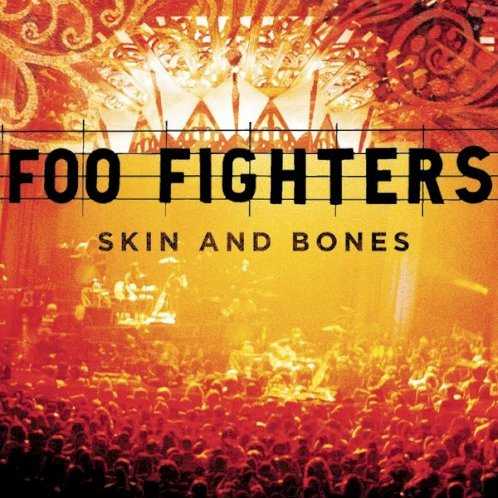 | Album: 6 of 12 Title: Skin and Bones Released: 2006-11-07 Tracks: 15 Duration: 1:13:11 Scroll: Up Down Top Bottom 25% 50% 75% Spotify Wikipedia Allmusic AlbumCover | 1 Razor (06:48) 2 Over and Out (05:56) 3 Walking After You (05:18) 4 Marigold (03:19) 5 My Hero (04:51) 6 Next Year (04:34) 7 Another Round (04:55) 8 Big Me (03:01) 9 Cold Day in the Sun (03:26) 10 Skin and Bones (04:00) 11 February Stars (05:51) 12 Times Like These (05:25) 13 Friend of a Friend (04:01) 14 Best of You (05:02) 15 Everlong (06:37) |
| Skin and Bones : Allmusic album Review : Given that the Foo Fighters released a double-album comprised of one electric record and one acoustic album, its no surprise that they performed several acoustic concerts on its supporting tour. One of these, a stop at the Pantages Theater in Los Angeles, is documented on the 2006 live album Skin and Bones album, which culls 15 highlights from the show. Although the Foo Fighters are performing on acoustics and are buttressed by such guest musicians as Petra Haden and Dave Grohls former Nirvana running partner Pat Smear, the band doesnt sound radically different here, nor do they reinvent their material: they merely play their music, culled largely from the last album plus the hits, with the skill of professionals and the heart of true believers, which makes this an engaging show if not necessarily a truly compelling one. Part of the problem is that the production is too crisp and clean, which only accentuates the groups seamless performances: there may be grit in Grohls voice, but not in how its recorded. This isnt a deal-breaker, but it makes an album that could have been special into one that is merely good. One for the fans, then. | ||
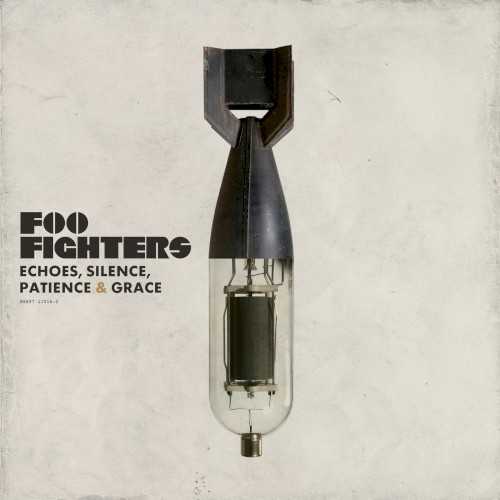 | Album: 7 of 12 Title: Echoes, Silence, Patience & Grace Released: 2007-09-18 Tracks: 12 Duration: 51:11 Scroll: Up Down Top Bottom 25% 50% 75% Spotify Wikipedia Allmusic AlbumCover | 1 The Pretender (04:28) 2 Let It Die (04:05) 3 Erase/Replace (04:13) 4 Long Road to Ruin (03:45) 5 Come Alive (05:10) 6 Stranger Things Have Happened (05:21) 7 Cheer Up, Boys (Your Make Up Is Running) (03:41) 8 Summer’s End (04:37) 9 Ballad of the Beaconsfield Miners (02:32) 10 Statues (03:47) 11 But, Honestly (04:35) 12 Home (04:53) |
| Echoes, Silence, Patience & Grace : Allmusic album Review : Its not quite right to say that the Foo Fighters only have one sound, but why does it always feel like the group constantly mines the same sonic vein? Even on 2007s Echoes, Silence, Patience & Grace -- their sixth album and first with producer Gil Norton since their second, 1997s The Colour and the Shape -- the Foos feel familiar, although the group spends some palpable energy weaving together the two sides of their personality that they went out of their way to separate on 2005s In Your Honor, where they divided the set into a disc of electric rockers and a disc of acoustic introspection. Here, the Foos gently slide from side to side, easing from delicate fingerpicked folk (including "Ballad of the Beaconsfield Miners," an instrumental duet between Dave Grohl and guitarist Kaki King) to the surging, muscular hard rockers that have been the groups modern rock radio signature. Echoes never lingers too long in either camp, as its sequenced with a savvy professionalism that only veteran rockers have. That sense of craft is evident in all the songs, whether its the subtly sly suite of the opening "The Pretender" -- after a slow build, it crashes into a crushing riff into a chorus, building to a typically insistent chorus before taking a slightly surprising bluesy boogie detour on the bridge -- or the sweet melodic folk-rock "Summers End," a song as warm and hazy as an August evening. "Summers End" is one of the unassailable highlights here, and all the rest of the truly memorable tunes on Echoes share its same, strong melodic bent, particularly "Statues," a wide-open, colorful anthem that feels as if its been resurrected from a late-70s AOR playlist. These songs place the melody at the forefront and also have a lighter feel than the rockers, which are now suffering from a dogged sobriety. For whatever reason, Dave Grohl has chosen to funnel all of his humor out of the Foo Fighters music and into their videos or into his myriad side projects. When Grohl wants to rock for fun, he runs off and forms a metal band like Probot, or hell tour with Queens of the Stone Age or record with Juliette Lewis. When it comes to his own band, he plays it too straight, as almost every rocker on Echoes -- with the notable exception of "Cheer Up Boys (Your Make Up Is Running)," a song that has a riff as nimble as those on the Foos debut -- is clenched and closed-off, sounding tight and powerful but falling far short of being invigorating. They sound a little labored, especially when compared to the almost effortlessly engaging melodies of the softer songs, the cuts that feel different than the now overly familiar Foo signature sound. And since those cavernous, accomplished rockers are so towering, they wind up overshadowing everything else on Echoes, which may ultimately be the reason why each Foo Fighters album feels kind of the same: Grohl and his band have grown subtly in other areas, but they havent pushed the sound that came to define them; theyve only recycled it. Since this is a sound thats somber, not frivolous, the Foos can sometimes feel like a bit of a chore if they lean too heavily in one direction -- as they do here, where despite the conscious blend of acoustic and electric tunes, the rockers weigh down Echoes more than they should, enough to make this seem like just another Foo Fighters album instead of the consolidation of strengths that it was intended to be. | ||
 | Album: 8 of 12 Title: Greatest Hits Released: 2009-10-30 Tracks: 16 Duration: 1:03:42 Scroll: Up Down Top Bottom 25% 50% 75% Spotify Wikipedia Allmusic AlbumCover | 1 All My Life (04:23) 2 Best of You (04:15) 3 Everlong (04:10) 4 The Pretender (04:28) 5 My Hero (04:20) 6 Learn to Fly (03:55) 7 Times Like These (04:26) 8 Monkey Wrench (03:51) 1 Big Me (02:12) 2 Breakout (03:20) 3 Long Road to Ruin (03:45) 4 This Is a Call (03:53) 5 Skin and Bones (04:03) 6 Wheels (04:38) 7 Word Forward (03:47) 8 Everlong (acoustic) (04:10) |
| Greatest Hits : Allmusic album Review : Almost 15 years on from their debut, Foo Fighters deliver their first Greatest Hits, a 15-track (16 if the double dip on "Everlong" counts) retrospective covering their six albums from 1995 to 2007. Greatest Hits isnt arranged chronologically, which isnt a detriment; if anything, skipping through the years emphasizes just how consistent the Foos have been, always delivering oversized rock & roll where the hooks are as big as the guitars. The only exceptions to the rule are the two lo-fi cuts "Big Me" and "This Is a Call," with "Ill Stick Around" qualifying as this comps inexplicable omission ("Walking After You," "DOA," "Stacked Actors," and "No Way Back" all also didnt make the cut), plucked from their 1995 debut, where the band was only Dave Grohl recording at home. Apart from this pair of tunes, this is all muscular, melodic modern rock, the kind that Foo Fighters almost patented, and if their consistency has occasionally made their albums blend together, it does result in one strong hits collection. | ||
 | Album: 9 of 12 Title: Wasting Light Released: 2011-04-08 Tracks: 11 Duration: 47:55 Scroll: Up Down Top Bottom 25% 50% 75% Spotify Allmusic AlbumCover | 1 Bridge Burning (04:46) 2 Rope (04:19) 3 Dear Rosemary (04:26) 4 White Limo (03:22) 5 Arlandria (04:28) 6 These Days (04:58) 7 Back & Forth (03:52) 8 A Matter of Time (04:36) 9 Miss the Misery (04:33) 10 I Should Have Known (04:15) 11 Walk (04:15) |
| Wasting Light : Allmusic album Review : Forget all that nonsense about Dave Grohl listening to the Bee Gees and ABBA when writing Wasting Light. You can even forget Bob Moulds killer cameo on "Dear Rosemary,” no matter how seamlessly the Hüsker Dü frontman’s patented growl slides into the Foo Fighters roar. What really matters is that nearly ten years after Songs for the Deaf, Josh Hommes influence finally rears its head on a Foo Fighters record, Dave Grohl leading his band of merry marauders -- including Pat Smear, who returns to the fold for the first time since 1997’s The Colour and the Shape -- through the fiercest album they’ve ever made. Nowhere is Hommes tightly defined muscle felt as strongly as it is on "White Limo," a blast of heavy sleaze thats kind of a rewrite of "You Think I Aint Worth a Dollar,” yet Grohl isn’t thieving -- he’s tweaking his frequent bandmate with a song that could have graced SFTD or Them Crooked Vultures. That sense of humor is welcome on Wasting Light, nearly as welcome as the guitars that ring loud and long. Things tend to crawl on the ballads, as they usually do on a Foos record, but these slower spots have a stately dignity that contrasts well with the untrammeled rock of the rest of the album. Perhaps Butch Vig -- working with Grohl for the first time since Nevermind (and that’s not the only Nirvana connection, as Krist Novoselic plays bass on “I Should Have Known”) -- should take some credit for the ferocious sound of Wasting Light, but the album isn’t the Foo Fighters best since their ‘90s heyday because of its sound; it’s their best collection of songs since The Colour and the Shape, the kind of record they’ve always seemed on the verge of delivering but never have. | ||
 | Album: 10 of 12 Title: Medium Rare Released: 2011-04-16 Tracks: 12 Duration: 42:06 Scroll: Up Down Top Bottom 25% 50% 75% Wikipedia AlbumCover | 1 Band on the Run (05:07) 2 I Feel Free (02:56) 3 Life of Illusion (03:40) 4 Young Man Blues (05:41) 5 Bad Reputation (02:33) 6 Down in the Park (04:06) 7 Baker Street (05:37) 8 Danny Says (02:59) 9 Have a Cigar (04:03) 10 Never Talking to You Again (01:53) 11 Gas Chamber (00:56) 12 This Will Be Our Year (02:33) |
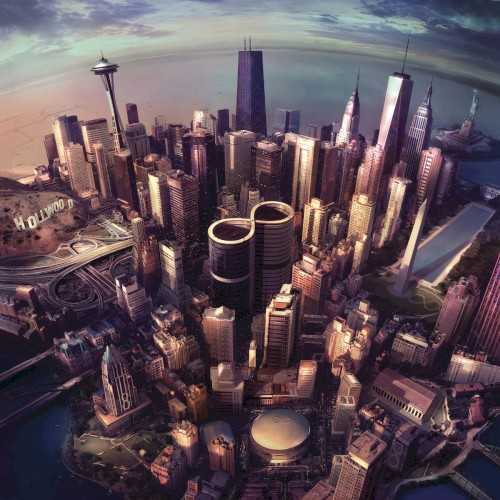 | Album: 11 of 12 Title: Sonic Highways Released: 2014-11-10 Tracks: 8 Duration: 42:08 Scroll: Up Down Top Bottom 25% 50% 75% Spotify Wikipedia Allmusic AlbumCover | 1 Something From Nothing (04:48) 2 The Feast and the Famine (03:49) 3 Congregation (05:11) 4 What Did I Do? / God as My Witness (05:43) 5 Outside (05:14) 6 In the Clear (04:03) 7 Subterranean (06:07) 8 I Am a River (07:08) |
| Sonic Highways : Allmusic album Review : Nobody ever wouldve thought the Foo Fighters were gearing up for a hiatus following the vibrant 2011 LP Wasting Light, but the group announced just that in 2012. It was a short-lived break, but during that time-off, lead Foo Dave Grohl filmed an ode to the classic Los Angeles recording studio Sound City, which in turn inspired the groups 2014 album, Sonic Highways. Constructed as an aural travelog through the great rock & roll cities of America -- a journey that was documented on an accompanying HBO mini-series of the same name -- Sonic Highways picks up the thread left dangling from Sound City: Real to Reel; it celebrates not the coiled fury of underground rock exploding into the mainstream, the way the 90s-happy Wasting Light did, but rather the classic rock that unites the U.S. from coast to coast. No matter the cameo here -- and there are plenty of guests, all consciously different from the next, all bending to the needs of their hosts -- the common denominator is the pumping amps, sky-scraping riffs, and sugary melodies that so identify the sound of arena rock at its pre-MTV peak. There are a few unexpected wrinkles, as when Ben Gibbard comes aboard to give "Subterranean" a canned electronic pulse and Tony Visconti eases the closing "I Am a River" into a nearly eight-minute epic, but the brief eight-song album just winds up sounding like nothing else but the Foo Fighters at their biggest, burliest, and loudest. Theyve become the self-proclaimed torch barriers for real rock, championing the musics history but also blessedly connecting the 70s mainstream and 80s underground so its all one big nation ruled by six-strings. That the mainstream inevitably edges out the underground on Sonic Highways is perhaps inevitable -- it is the common rock language, after all -- but even if theres a lingering predictability in the paths the Foo Fighters follow on Sonic Highways, they nevertheless know how to make this familiar journey pleasurable. | ||
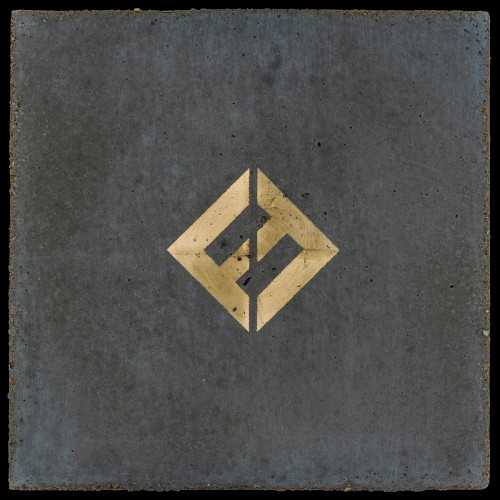 | Album: 12 of 12 Title: Concrete and Gold Released: 2017-09-15 Tracks: 11 Duration: 48:03 Scroll: Up Down Top Bottom 25% 50% 75% Spotify Wikipedia Allmusic AlbumCover | 1 T‐Shirt (01:22) 2 Run (05:23) 3 Make It Right (04:39) 4 The Sky Is a Neighborhood (04:04) 5 La Dee Da (04:02) 6 Dirty Water (05:20) 7 Arrows (04:26) 8 Happy Ever After (Zero Hour) (03:40) 9 Sunday Rain (06:11) 10 The Line (03:38) 11 Concrete and Gold (05:18) |
| Concrete and Gold : Allmusic album Review : Anybody as obsessed with musical chops as Dave Grohl would inevitably drift toward prog rock, which is precisely what happens with Foo Fighters on their ninth album. Perhaps "prog" doesnt seem like an easy fit for Foo Fighters, who have melded furious noise with candied melodies since their 1995 debut, but Concrete and Gold is filled with showy accents that accentuate the acumen of all six musicians. Hooks abound, whether theyre in the grinding guitars or triple-stacked vocal harmonies, but theyre not molded into songs that resemble tunes. Take "Dirty Water," which begins as a piece of dreamy twilight psychedelia but winds up as a cloistered vamp goosed along by analog synths straight out of 1975. Its as if the Foos are so impatient to offer a twist theyll sabotage a straight song with a quick left turn or gleeful self-indulgence. Coming after Sonic Highways, where the group stuck to the straight and narrow, its frankly a bit of a relief to have Foo Fighters offer an album full of detours, even if theyre winding up redefining the character of the band. Plenty of familiar elements are in place -- "Run" speeds by with hardcore velocity, the tightly wound riffs on "Make It Right" function as a virtual Josh Homme tribute, "The Line" can serve as inspirational rock for long drives or workouts -- but the Foos piece them together in a way that suggests the bandmembers are bored with themselves. Add to that harmonies straight out of Abbey Road -- not just vocals but stacked guitars -- and allusions to the slow, spacy crawl of Pink Floyd, highlighted by how Concrete and Gold comes crashing into focus in a fashion similar to "In the Flesh?" and crawls to a close with an extended Dark Side of the Moon salute. In between, Foo Fighters show that theyre in love with light and shade, fury and quiet, every twist and turn they can make with their instruments, and even if Concrete and Gold isnt about much more than that, its refreshing to hear the Foos embrace Grohls allegiance to real rock values to the logical flashing conclusion. | ||